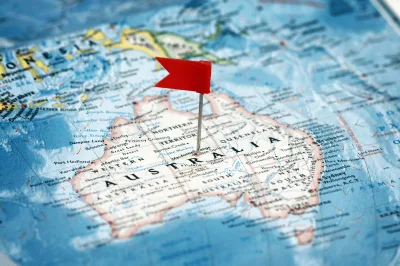On This Page...
ToggleDe Facto Visa Australia: Complete Guide for Couples
By Nilesh Nandan – Australian Immigration Lawyer, MyVisa® Immigration Lawyers
This blog is intended for discussion purposes only and does not constitute advice. You should seek independent legal advice before relying on any information provided on this site.
Immigration policies, systems, and processes can change without notice. I’d like to know your own experience with the immigration challenges noted above — feel free to contact me.
Table of Contents
Introduction
As an immigration lawyer, I meet hundreds of couples each year who are confused about what a “de facto visa” actually is. Many think it’s a separate visa subclass – it isn’t. Rather, “de facto” refers to your relationship type when applying for a Partner Visa in Australia.
If you are in a genuine, committed relationship but not legally married, you may be eligible for a de facto visa under either the onshore (Subclass 820/801) or offshore (Subclass 309/100) Partner Visa pathways. The law recognises your relationship if you can show that you and your partner have lived together for at least 12 months (or less, if registered under State law).
This guide explains everything — from proving your relationship, meeting eligibility, comparing onshore and offshore options, to avoiding costly mistakes that lead to refusals. Whether you’re already in Australia or applying from overseas, my goal is to help you understand exactly what to do and how to do it right the first time.
Understanding the De Facto Visa
The term “de facto visa” is commonly used but technically refers to the Partner Visa subclasses that apply to unmarried couples. Your relationship must meet the Migration Regulations 1994 definition of “de facto partner,” meaning you are not legally married, but have a genuine and continuing relationship and live together (or do not live apart permanently).
What the De Facto Visa Allows You to Do
- Live, work, and study in Australia while awaiting your visa outcome.
- Access Medicare (once the temporary stage visa is granted).
- Travel in and out of Australia freely once on the visa.
- Progress to permanent residence through the second stage of the Partner Visa.
Essentially, this visa recognises and protects genuine relationships that are not yet formalised by marriage, ensuring both partners can live together in Australia lawfully. ([immi.homeaffairs.gov.au](https://immi.homeaffairs.gov.au/visas/getting-a-visa/partner-onshore))
Eligibility Criteria for De Facto Partner Visa
To qualify for a de facto partner visa, you must demonstrate a relationship that satisfies strict legal requirements. These are set out under Regulation 1.09A of the Migration Regulations 1994.
Basic Eligibility Requirements
- You and your partner must be aged 18 or older.
- You must be in a genuine and continuing relationship to the exclusion of all others.
- You must live together or not live apart permanently.
- You must show that the relationship has existed for at least 12 months prior to application unless registered under state/territory law (e.g., NSW Relationship Register).
- Your partner must be an Australian citizen, permanent resident, or eligible New Zealand citizen.
Character and Health
Both partners must meet health and character requirements. This may include police checks from every country lived in for 12+ months and health examinations approved by Home Affairs.
Special Circumstances
There are exemptions to the 12-month rule. For example:
- If your relationship is registered under Australian State or Territory law.
- If compelling circumstances exist (e.g., children of the relationship, humanitarian protection).
- If you could not live together due to workplace, cultural, or visa restrictions but maintained evidence of commitment.
Proof of Relationship – The Core of Your Application
The single biggest reason partner visa applications fail is insufficient or inconsistent relationship evidence. Home Affairs assesses your relationship across four key factors:
- Financial aspects of the relationship
- Nature of the household
- Social aspects of the relationship
- Nature of your commitment to each other
Examples of Acceptable Evidence
| Category | Examples of Evidence |
|---|---|
| Financial | Joint bank accounts, shared bills, joint property lease or mortgage, tax declarations as partners. |
| Household | Shared rental agreements, joint utilities, correspondence to same address, photos of daily life. |
| Social | Photos together at family or social events, invitations addressed to both, statutory declarations from friends/family. |
| Commitment | Long-term plans, wills, superannuation beneficiaries, communication records showing emotional support. |
To strengthen your case, present your evidence in chronological order and include personal statements detailing how your relationship developed. The most convincing applications tell a consistent story supported by documentation.
Onshore vs Offshore De Facto Visa (820/801 vs 309/100)
You can apply for the partner visa as a de facto partner either while you are in Australia (onshore) or from outside the country (offshore). The two streams are structurally similar but differ in timing, processing, and conditions.
| Feature | Onshore (Subclass 820/801) | Offshore (Subclass 309/100) |
|---|---|---|
| Where You Apply | In Australia | Outside Australia |
| Temporary Stage | Subclass 820 (apply and stay in Australia while processing) | Subclass 309 (apply from overseas, may enter once granted) |
| Permanent Stage | Subclass 801 (usually assessed two years after 820) | Subclass 100 (assessed after 309) |
| Work Rights | Full work and study rights after 820 grant | Full work rights after 309 grant |
| Medicare | Eligible after 820 grant | Eligible once in Australia after 309 |
| Processing Time | 16–28 months on average | 15–29 months on average |
| Cost (as of 2025) | From AUD 8,850 | From AUD 8,850 |
| Advantages | Allows you to remain in Australia while waiting | Ideal if you cannot enter Australia yet |
| Disadvantages | Bridging visa delays if previous visa expires | No bridging visa protection before arrival |
For most couples already together in Australia, the onshore route offers convenience and security. However, offshore applications may suit those separated by border, work, or timing constraints.
Step-by-Step Application Process
The de facto partner visa involves two stages — temporary and permanent. You lodge one combined application and pay one fee.
- Confirm eligibility – ensure your relationship meets de facto criteria and that your partner is an eligible sponsor.
- Gather evidence – compile all documents proving your relationship across the four categories mentioned above.
- Create an ImmiAccount – all partner visa applications are lodged online.
- Complete the Partner Visa Application Form – provide accurate details about both partners.
- Your partner lodges the Sponsorship Form (Form 40SP) – this must be done soon after your main application.
- Upload documents – certified copies of passports, evidence, and statutory declarations (Form 888 from witnesses).
- Pay the visa fee – AUD 8,850 (as at 2025), payable once for both stages.
- Receive Bridging Visa (onshore only) – if your current visa expires while awaiting decision.
- Attend health and character checks – police clearances and medical exams.
- Wait for decision – first the temporary stage (820/309), then after ~2 years, the permanent stage (801/100).
For complex cases — e.g., previous visa cancellations or criminal records — seek professional assistance. I’ve represented clients who faced visa cancellations and visa refusals but succeeded on appeal by providing stronger, better-organised evidence.
Processing Time, Cost & Timeline
Cost
- Visa application charge: AUD 8,850 (main applicant).
- Additional applicant (18+): AUD 4,430.
- Additional applicant (under 18): AUD 2,215.
Processing Time (as at October 2025)
- 75% of applications: 16–28 months for Subclass 820.
- 90% of applications: up to 32 months for Subclass 801/100.
Timeline Overview
| Stage | Description | Average Duration |
|---|---|---|
| Preparation | Gathering documents, drafting forms | 1–3 months |
| Application lodgement | Online submission via ImmiAccount | Immediate |
| Bridging Visa (if onshore) | Activates after current visa expires | Varies |
| Temporary Visa Grant | Subclass 820/309 issued | 16–28 months |
| Permanent Visa Stage | Subclass 801/100 assessment | ~24 months after temporary stage |
Common Reasons for De Facto Visa Refusals
Visa refusals often happen not because the relationship is fake, but because the evidence fails to meet legal standards. Common reasons include:
- Insufficient evidence across one or more of the four relationship categories.
- Contradictions in personal statements and witness declarations.
- Failure to meet the 12-month cohabitation requirement or prove exemption.
- Incorrect or outdated statutory declarations (Form 888).
- Inconsistent address or travel records between partners.
- Not disclosing previous visa refusals or cancellations.
- Not providing certified translations for non-English documents.
If your application has been refused, it may still be reviewable at the Administrative Appeals Tribunal (AAT). My team frequently helps clients file successful appeals by fixing the evidence gaps that led to the initial refusal.
Real-Life Scenarios & Legal Insights
Case 1 – Student and Australian Citizen
Maria, an international student from Brazil, began living with her Australian partner while finishing her degree. They applied for the onshore de facto visa before her student visa expired. By showing joint bank accounts, shared lease, and social evidence, her 820 was granted within 20 months. She later obtained permanent residency under subclass 801.
Case 2 – Couple Living Apart Due to Work
Sanjay worked in Perth while his partner Priya was posted interstate. They saw each other monthly and maintained a joint bank account. Though living separately, they documented constant communication and registered their relationship in NSW, meeting exemption requirements. Their offshore application was approved after 24 months.
Case 3 – Visa Refusal Overturned
A de facto visa for a same-sex couple was initially refused due to inconsistent timelines in their statements. Upon appeal, we demonstrated the relationship history with additional witness declarations, digital communication logs, and statutory declarations correcting the errors. The AAT set aside the refusal and the visa was granted.
Evidence & Document Checklist
Before submitting your application, ensure you have the following:
- Identity documents (passports, birth certificates, photos).
- Relationship evidence: financial, household, social, and commitment proof.
- Police clearances for both partners.
- Health check results (authorised panel physician).
- Form 888 declarations from two or more Australian citizens or PRs.
- Proof of sponsor’s citizenship or PR status.
- Relationship registration certificate (if applicable).
- Translations of non-English documents.
- Cover letter summarising relationship and evidence.
Frequently Asked Questions
- How long does it take to get a de facto visa in Australia?
Processing times vary, but most onshore applications take 16–28 months for the temporary stage, and permanent stage follows about two years later.
- How much does the de facto visa cost?
The visa charge starts from AUD 8,850 for the main applicant, plus additional charges for family members.
- What happens if my relationship ends before the permanent stage?
Your visa may be cancelled unless there are special circumstances such as domestic violence or a child of the relationship.
- Can my de facto visa be refused under Section 501 (character grounds)?
Yes. If you fail the character test under Section 501 of the Migration Act 1958, your visa can be refused or cancelled. Seek legal representation immediately.
- Can I apply if we have not lived together for 12 months?
Yes, if your relationship is registered in an Australian state or there are compelling circumstances like having a child together.
- Do I need to be onshore for the permanent stage?
- Yes, for subclass 801, you must be in Australia at the time of decision; for 100, offshore at the time of decision.
Book a Consultation
The de facto visa process can feel overwhelming — but with the right guidance, it doesn’t have to be. I’ve helped thousands of couples navigate this complex area of law successfully, even after refusals or cancellations.
Book a consultation with me today to discuss your visa situation.
For further resources, visit Visa Refusals, Visa Cancellations, Partner Visas, and Contact MyVisa to arrange your consultation.
Legal Disclaimer
By Nilesh Nandan — Australian Immigration Lawyer, MyVisa®️ Immigration Lawyers
This blog is intended for discussion purposes only and does not constitute advice. You should seek independent legal advice before relying on any information provided on this site. Immigration policies, systems, and processes can change without notice. I’d like to know your own experience with the immigration challenges noted above — feel free to contact me.
MyVisa: Nilesh Nandan, Attorney at Law
BBus(Accy) LLB(QUT) GDLP MBA(IntBus)
Head of Practice





523 Responses
Hi Nilesh,
Thank you for sharing the information. It is very helpful.
Can I ask you a question re Statutory Declaration? Since I can’t speak much of English, the friends I’ve made in Aus don’t speak much too. Thus they cant help to sign the Stat Dec. Since my partner is Australian, can he find two people from his side to fill in the Stat Dec? ( I’ve only been in Aus around 2
Thank you very much in advance.
Mia
Hi, I am on MRT ( AAT ) and from last 8 month me and my girlfriend leaving together on same address also she is separated but still not divorced she is waiting to finish 12month for divorce so can I apply for de Fecto visa before or after 12 month.
I will wait for your reply. Thanks
Hi there Nilesh,
I’ve being in a relationship with my girlfriend whose an Australian for about 3 months and we’re thinking to move in together and register as a defacto visa. I am on student visa atm .My question is that 12 month period starts from the day we register our relationship or ? So I can apply for PR and how long will be the best to prove our relationship so I can get the PR visa ?
Thank you
You can apply now.
I recommend you book in chat with me.
myvisa.com.au/services
Regards
Nilesh
My partner and I have lived together for over two years in my home in Australia. She has visited Australia 6 times since 5 March 2016. The last 4 visits were about 6 months each time. She has been refused a visitors visa this September 2019 because she has spent too much time in Australia and has no real income or property in the Philippines and therefore it was thought she may overstay, this in spite of going home ahead of time in each of her 6 trips here. We were going to apply for an on-shore visa 820 leading to 801 when she arrived, but as she has been knocked back, that is now not possible.
Two questions: 1. should she apply for a visitors visa again and limit it to only three months, and if successful apply for 820 while she is here; or
2. should she apply for 309 leading to 100 off shore, and then immediately apply for visitors visa so we can be together. I have a non curable blood cancer which is why she has spent to much time here. I did not share that detail with Immigration. Thanks
Ed
In brief terms:
1. the visitor visa is not the appropriate visa for any defacto partner.
2. you should not apply for a further visitor visa without first applying for an offshore de facto partner visa. (registration of your relationship is recommended but unlikely now if she is offshore).
3. an offshore 309 should be lodged with full disclosures.
Hope this helps.
Nilesh Nandan
Immigration Lawyer
https://myvisa.com.au/about/
Hi there Nilesh
At the time of me applying for the visa this coming November, me and my partner would only have been in a relationship for 9 and a half months. We currently just got a new joint lease and would have been living together for 1 1/2 months at the time of application.
I have just recently registered my relationship with my partner last month to waive the 12 month de-facto/cohabitation requirement, but was wondering if a 9 month relationship stands a chance even in lieu of relationship registration?
If if have been in a genuine defacto relationship for 9.5 months and have a certificate, you will be fine to lodge before the 12 months is up. Does this answer your question?
Nilesh Nandan
Yes Nilesh, thank you very much.
I just was a bit fearful as when filling form 47sp online, it flagged up an issue saying the de-facto relationship is not long enough to satisfy requirements for the partner visa and to give compelling circumstances as to why it should be allowed.
I mentioned in the comment box that we have registered our relationship, and also mentioned our commitment to each other. Many people on forums have been saying registering your relationship doesn’t even matter, so lots of confusing information online.
I would like to learn more about your issue – it it has not been resolved.
You can book in a chat with me if you need to discuss.
Regards
Nilesh Nandan
Hi Sir,
My girlfriend has just been refused a visitor VISA (visit family) to re-enter Australia. She has spent 270 days in Australia and 67 days outside Australia in the last 11 months. She left Australia at the start of this month and we applied for VISA the day after she arrive home. The Dept’ officer stated “I place significant weight on travel history. Per policy, a visitor would be expected to spend as much time out of Australia as in…. I am not satisfied that the applicant does not intend to continue to spend the majority of her time residing in Australia.” We were honest in my invite letter of wanting to resume our de facto relationship and grow a stronger relationship. However, we have lived together for only 8 and a half months and short of the 12 month requirement for a partner VISA. How can we live together 12 months continually? I need to work to support us both, so it is difficult to go to her country. The letter ends with the clause 600.211 is not satisfied (Migration Regulations). I miss by 39 yo baby, I am 56. Thanks for any comments
Baz
Thanks for sharing your defacto partner visa problem.
Had you considered registering your relationship while she was in Australia?
This would have given you some options!
Regards
Nilesh Nandan
myvisa.com.au/book
I have a girlfriend and she is a nurse, if we got married, will she loose her nurse registration after applying for the partner visa?
No, why would she?
There may well be other disadvantages to marriage, but losing your nursing registration is unlikley to be one of them 🙂